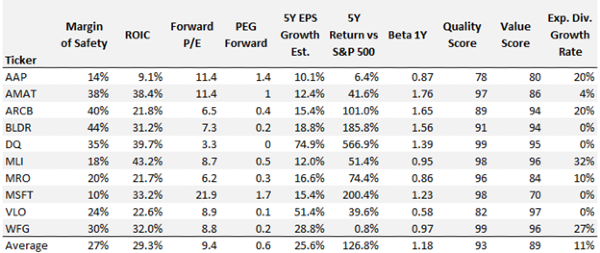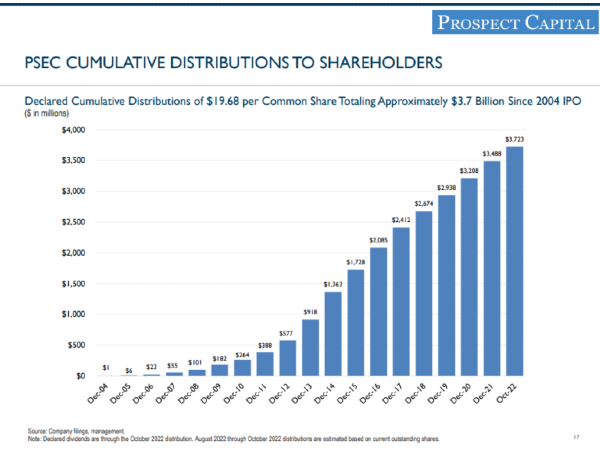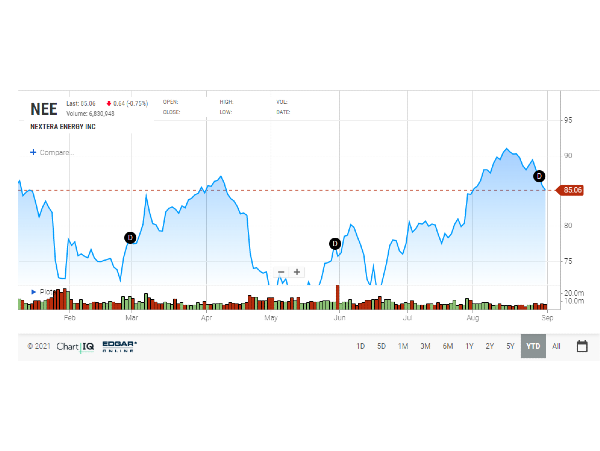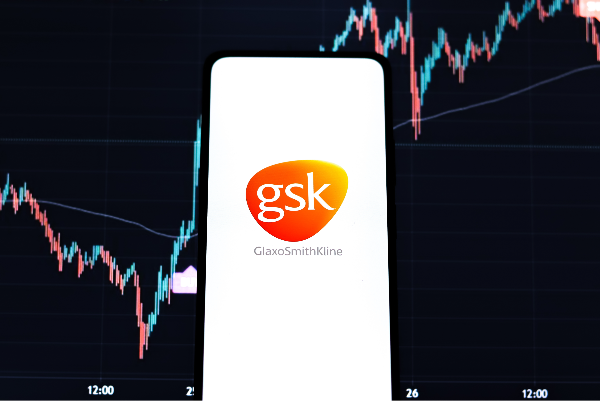What are Mid-Cap Stocks: Definition and Characteristics
Mid-cap stocks represent shares of companies with medium-sized market capitalizations, typically ranging from $2 billion to $10 billion. These companies are considered to be in the middle tier of market valuation, offering investors a balanced opportunity for growth and stability. Mid-cap stocks are often seen as an appealing choice for investors seeking a mix of innovation and resilience.
Positioned between small-cap and large-cap stocks, mid-cap stocks occupy a unique space in the market capitalization spectrum. While small-cap stocks are known for high growth potential and volatility, and large-cap stocks for stability and established success, mid-cap stocks offer a blend of both attributes. They can provide opportunities for higher returns while maintaining a relatively lower risk compared to small-cap investments.
Mid-cap companies are frequently characterized by their rapid growth and profitability. These firms often demonstrate strong earnings potential as they expand their market presence and refine their business strategies. Unlike small-cap companies, which tend to be more speculative, mid-cap stocks generally offer a more predictable growth trajectory, appealing to investors with moderate risk appetites.
In comparison to small-cap stocks, mid-cap stocks tend to exhibit less volatility, making them a more stable investment option. They strike a balance between the growth opportunities of smaller companies and the dependable nature of larger ones. This combination of growth and reduced risk attracts investors looking for diversification and long-term wealth-building potential.
Benefits of Investing in Mid-Cap Stocks: Growth Potential and Risk Management
Mid-cap stocks strike a compelling balance between growth potential and profitability, making them a valuable addition to any diversified portfolio. These companies, often in their expansion phase, deliver consistent earnings while offering room for further growth. Investors seeking a combination of moderate risk and promising returns often gravitate toward mid-cap stocks.
Despite their advantages, mid-cap stocks are frequently overlooked as investors tend to focus on the extremes of small-cap and large-cap companies. This underrepresentation creates opportunities for astute investors to capitalize on mid-cap stocks’ growth and stability potential before broader market recognition elevates their value.
Adding mid-cap stocks to a portfolio can enhance diversification, reducing exposure to the risks of concentrating investments in a single market segment. Their balanced position between high-growth small caps and stable large caps enables mid-cap stocks to contribute both resilience and growth, especially during varying market cycles.
Mid-cap stocks also provide a strategic way to manage risk while pursuing growth. These stocks generally exhibit less volatility than small-cap stocks, offering a smoother investment journey. By blending mid-cap stocks into a portfolio, investors can achieve a better risk-adjusted return profile and position themselves for steady long-term gains.
Top Performing Mid-Cap Stocks: Examples of Successful Mid-Cap Companies
Ambarella stands out as a mid-cap company specializing in computer vision semiconductors. Known for its innovative CVflow architecture, Ambarella develops low-power, high-definition processors used in automotive, security, and robotics applications. Its focus on advanced imaging and AI-driven solutions positions it as a leader in edge computing technologies.
Clover Health Investments operates in the healthcare insurance sector, offering Medicare Advantage plans across multiple states. Leveraging data analytics through its Clover Assistant platform, the company enhances preventive care and personalized health recommendations. Clover's commitment to affordable and accessible healthcare makes it a noteworthy player in the mid-cap space.
Iridium Communications excels in global telecommunications, providing satellite-based voice and data services. Its unique constellation of satellites ensures reliable connectivity anywhere on Earth, catering to industries like aviation, maritime, and government. Iridium's innovative solutions, such as the Iridium Certus platform, highlight its leadership in satellite communications.
These mid-cap companies exemplify growth and innovation within their respective industries. Ambarella, Clover Health Investments, and Iridium Communications demonstrate the potential of mid-cap stocks to deliver both technological advancements and market resilience. Their success underscores the value of exploring mid-cap opportunities for diversified investment strategies.
Mid-Cap ETFs and Mutual Funds
Mid-cap ETFs are an excellent tool for diversifying investment portfolios by offering exposure to a broad range of mid-cap stocks. These funds include companies with medium-sized market capitalizations, providing a balanced opportunity for growth and stability. By investing in mid-cap ETFs, investors can tap into the unique advantages of mid-cap stocks without concentrating on a specific sector.
One of the key benefits of mid-cap ETFs is their convenience. Instead of spending time researching and analyzing individual stocks, investors can purchase an ETF that aggregates multiple mid-cap companies. This streamlined approach reduces the complexity of portfolio management while ensuring exposure to a diversified set of mid-cap firms.
Prominent examples of mid-cap ETFs include the Vanguard Mid-CAP ETF (VO), which tracks the CRSP US Mid Cap Index, and the iShares S&P Mid-Cap 400 Growth ETF (IJK), which focuses on the growth segment of mid-cap stocks within the S&P MidCap 400 Index. Both funds provide investors with access to high-performing mid-cap companies across various industries.
Similarly, mid-cap mutual funds can serve as a diversification tool for investors looking to gain exposure to mid-sized companies. These funds, like mid-cap ETFs, pool investments into portfolios of mid-cap stocks but are actively managed to achieve specific investment goals. By incorporating mid-cap ETFs or mutual funds, investors can balance risk while capturing growth opportunities.
Evaluating Mid-Cap Stocks: Key Factors to Consider
Evaluating mid-cap stocks demands a comprehensive analysis of key factors such as financial health, management quality, and industry trends. Reviewing financial statements provides insights into a company's revenue growth, profitability, and debt levels. A capable management team with a clear strategy can drive sustainable growth, while favorable industry conditions enhance the company's potential for success.
Investors should prioritize companies with a robust competitive advantage that differentiates them from peers. A proven business model with consistent performance and a history of overcoming challenges signals resilience. Additionally, mid-cap stocks with a solid track record of growth are more likely to continue expanding their market share and delivering returns.
Key financial metrics play a critical role in evaluating mid-cap stocks. Revenue growth demonstrates the company's ability to increase sales over time, while profit margins reflect efficiency in generating earnings. Return on equity (ROE) provides insights into how effectively the company uses shareholder funds to create profits, making it a valuable measure for investors.
When assessing mid-cap stocks, diversification within industries and sectors can also minimize risks. Combining strong financials, strategic management, and competitive advantages with steady growth indicators equips investors with a well-rounded perspective for choosing promising mid-cap investments.
Mid-Cap Stocks in Key Sectors: Financial, Healthcare, and Technology
Mid-cap financial companies present a compelling mix of growth potential and stability, making them attractive to a diverse range of investors. These companies often exhibit solid financials and growth trajectories, positioning them as reliable contributors to long-term portfolios. Mid-cap financials excel at tapping into niche markets while maintaining a balanced risk profile.
Notable examples in the financial sector include Webster Financial Corporation and East West Bancorp, Inc. Webster Financial is renowned for its focus on community banking, while East West Bancorp thrives in cross-border banking services between the U.S. and Asia. Both companies demonstrate the robust growth and innovation potential characteristic of mid-cap financial firms.
In the healthcare sector, mid-cap companies like Clover Health Investments drive innovation through technology and data-driven solutions. Clover leverages its Clover Assistant platform to improve healthcare outcomes and operational efficiency. Other mid-cap players in the healthcare space similarly bridge the gap between affordability and quality, advancing the sector's evolution.
The technology sector is home to standout mid-cap firms such as Ambarella, a leader in computer vision semiconductors. These companies push the boundaries of AI and imaging technologies, serving industries like automotive, security, and robotics. Mid-cap tech companies exemplify the innovative spirit and growth opportunities that investors seek in this rapidly evolving sector.
Investing in Mid-Cap Stocks Strategies and Tips
Investors seeking broad exposure to mid-cap stocks can consider targeted ETFs or mutual funds. These financial products offer diversified portfolios of mid-cap companies, reducing the effort required to individually select stocks. Examples include ETFs like the Vanguard Mid-Cap ETF, which track multiple mid-cap companies across various industries, providing a cost-effective investment option.
For those willing to invest in individual mid-cap stocks, thorough research and analysis are crucial. Key factors to evaluate include the company's competitive advantage, financial performance, and industry trends. Metrics like revenue growth, profit margins, and return on equity can help identify companies with strong potential for growth and stability within the mid-cap segment.
Diversifying a portfolio is an essential strategy when investing in mid-cap stocks. Spreading investments across different sectors, such as technology, healthcare, and financials, can help mitigate risks associated with sector-specific downturns. This balanced approach ensures that overall portfolio performance remains resilient even during market fluctuations.
A long-term perspective can further enhance returns on mid-cap investments. By focusing on stable, high-quality mid-cap companies and maintaining diversification, investors can take advantage of growth opportunities while effectively managing risks. This disciplined approach can lead to sustainable portfolio growth over time.
Challenges and Considerations: Market Trends, Risks, and Volatility
Mid-cap stocks often experience higher volatility compared to large-cap stocks, though they remain less volatile than small-cap stocks. This intermediate risk level can be attributed to their market position as growing companies that have not yet achieved the stability of larger firms. While this volatility presents opportunities for higher returns, investors must be prepared for potential fluctuations.
Market trends and risks play a crucial role in determining mid-cap stock performance. Factors such as changing interest rates, economic growth, and sector-specific developments can significantly impact their profitability and growth potential. Staying informed about these external conditions helps investors make timely and strategic decisions.
The potential for growth in mid-cap stocks remains a significant advantage despite their risks. These companies are often in their expansion phase, demonstrating profitability and innovative strategies to capture market share. By identifying mid-cap stocks with strong fundamentals and a proven track record, investors can unlock substantial growth opportunities.
To effectively navigate the challenges associated with mid-cap stocks, a balanced investment approach is essential. Diversifying across sectors and industries mitigates risks while maintaining exposure to growth potential. Combining thorough analysis of market trends with careful selection of mid-cap companies enables investors to manage volatility while pursuing long-term returns.
Summary and Next Steps
Mid-cap stocks present a unique opportunity for investors, blending growth potential with stability. Their position between small-cap and large-cap stocks offers a balanced approach to achieving diversified portfolio goals. By targeting mid-cap investments, investors can benefit from steady growth while managing risks associated with market volatility.
To maximize returns, diversification across sectors such as technology, healthcare, and financials is crucial when investing in mid-cap stocks. Conducting thorough research and analysis is equally important, ensuring selections are based on strong fundamentals, competitive advantages, and growth trajectories. This disciplined approach paves the way for sustainable portfolio development and long-term success.






























What are Mid-Cap Stocks: Definition and Characteristics
Mid-cap stocks represent shares of companies with medium-sized market capitalizations, typically ranging from $2 billion to $10 billion. These companies are considered to be in the middle tier of market valuation, offering investors a balanced opportunity for growth and stability. Mid-cap stocks are often seen as an appealing choice for investors seeking a mix of innovation and resilience.
Positioned between small-cap and large-cap stocks, mid-cap stocks occupy a unique space in the market capitalization spectrum. While small-cap stocks are known for high growth potential and volatility, and large-cap stocks for stability and established success, mid-cap stocks offer a blend of both attributes. They can provide opportunities for higher returns while maintaining a relatively lower risk compared to small-cap investments.
Mid-cap companies are frequently characterized by their rapid growth and profitability. These firms often demonstrate strong earnings potential as they expand their market presence and refine their business strategies. Unlike small-cap companies, which tend to be more speculative, mid-cap stocks generally offer a more predictable growth trajectory, appealing to investors with moderate risk appetites.
In comparison to small-cap stocks, mid-cap stocks tend to exhibit less volatility, making them a more stable investment option. They strike a balance between the growth opportunities of smaller companies and the dependable nature of larger ones. This combination of growth and reduced risk attracts investors looking for diversification and long-term wealth-building potential.
Benefits of Investing in Mid-Cap Stocks: Growth Potential and Risk Management
Mid-cap stocks strike a compelling balance between growth potential and profitability, making them a valuable addition to any diversified portfolio. These companies, often in their expansion phase, deliver consistent earnings while offering room for further growth. Investors seeking a combination of moderate risk and promising returns often gravitate toward mid-cap stocks.
Despite their advantages, mid-cap stocks are frequently overlooked as investors tend to focus on the extremes of small-cap and large-cap companies. This underrepresentation creates opportunities for astute investors to capitalize on mid-cap stocks’ growth and stability potential before broader market recognition elevates their value.
Adding mid-cap stocks to a portfolio can enhance diversification, reducing exposure to the risks of concentrating investments in a single market segment. Their balanced position between high-growth small caps and stable large caps enables mid-cap stocks to contribute both resilience and growth, especially during varying market cycles.
Mid-cap stocks also provide a strategic way to manage risk while pursuing growth. These stocks generally exhibit less volatility than small-cap stocks, offering a smoother investment journey. By blending mid-cap stocks into a portfolio, investors can achieve a better risk-adjusted return profile and position themselves for steady long-term gains.
Top Performing Mid-Cap Stocks: Examples of Successful Mid-Cap Companies
Ambarella stands out as a mid-cap company specializing in computer vision semiconductors. Known for its innovative CVflow architecture, Ambarella develops low-power, high-definition processors used in automotive, security, and robotics applications. Its focus on advanced imaging and AI-driven solutions positions it as a leader in edge computing technologies.
Clover Health Investments operates in the healthcare insurance sector, offering Medicare Advantage plans across multiple states. Leveraging data analytics through its Clover Assistant platform, the company enhances preventive care and personalized health recommendations. Clover's commitment to affordable and accessible healthcare makes it a noteworthy player in the mid-cap space.
Iridium Communications excels in global telecommunications, providing satellite-based voice and data services. Its unique constellation of satellites ensures reliable connectivity anywhere on Earth, catering to industries like aviation, maritime, and government. Iridium's innovative solutions, such as the Iridium Certus platform, highlight its leadership in satellite communications.
These mid-cap companies exemplify growth and innovation within their respective industries. Ambarella, Clover Health Investments, and Iridium Communications demonstrate the potential of mid-cap stocks to deliver both technological advancements and market resilience. Their success underscores the value of exploring mid-cap opportunities for diversified investment strategies.
Mid-Cap ETFs and Mutual Funds
Mid-cap ETFs are an excellent tool for diversifying investment portfolios by offering exposure to a broad range of mid-cap stocks. These funds include companies with medium-sized market capitalizations, providing a balanced opportunity for growth and stability. By investing in mid-cap ETFs, investors can tap into the unique advantages of mid-cap stocks without concentrating on a specific sector.
One of the key benefits of mid-cap ETFs is their convenience. Instead of spending time researching and analyzing individual stocks, investors can purchase an ETF that aggregates multiple mid-cap companies. This streamlined approach reduces the complexity of portfolio management while ensuring exposure to a diversified set of mid-cap firms.
Prominent examples of mid-cap ETFs include the Vanguard Mid-CAP ETF (VO), which tracks the CRSP US Mid Cap Index, and the iShares S&P Mid-Cap 400 Growth ETF (IJK), which focuses on the growth segment of mid-cap stocks within the S&P MidCap 400 Index. Both funds provide investors with access to high-performing mid-cap companies across various industries.
Similarly, mid-cap mutual funds can serve as a diversification tool for investors looking to gain exposure to mid-sized companies. These funds, like mid-cap ETFs, pool investments into portfolios of mid-cap stocks but are actively managed to achieve specific investment goals. By incorporating mid-cap ETFs or mutual funds, investors can balance risk while capturing growth opportunities.
Evaluating Mid-Cap Stocks: Key Factors to Consider
Evaluating mid-cap stocks demands a comprehensive analysis of key factors such as financial health, management quality, and industry trends. Reviewing financial statements provides insights into a company's revenue growth, profitability, and debt levels. A capable management team with a clear strategy can drive sustainable growth, while favorable industry conditions enhance the company's potential for success.
Investors should prioritize companies with a robust competitive advantage that differentiates them from peers. A proven business model with consistent performance and a history of overcoming challenges signals resilience. Additionally, mid-cap stocks with a solid track record of growth are more likely to continue expanding their market share and delivering returns.
Key financial metrics play a critical role in evaluating mid-cap stocks. Revenue growth demonstrates the company's ability to increase sales over time, while profit margins reflect efficiency in generating earnings. Return on equity (ROE) provides insights into how effectively the company uses shareholder funds to create profits, making it a valuable measure for investors.
When assessing mid-cap stocks, diversification within industries and sectors can also minimize risks. Combining strong financials, strategic management, and competitive advantages with steady growth indicators equips investors with a well-rounded perspective for choosing promising mid-cap investments.
Mid-Cap Stocks in Key Sectors: Financial, Healthcare, and Technology
Mid-cap financial companies present a compelling mix of growth potential and stability, making them attractive to a diverse range of investors. These companies often exhibit solid financials and growth trajectories, positioning them as reliable contributors to long-term portfolios. Mid-cap financials excel at tapping into niche markets while maintaining a balanced risk profile.
Notable examples in the financial sector include Webster Financial Corporation and East West Bancorp, Inc. Webster Financial is renowned for its focus on community banking, while East West Bancorp thrives in cross-border banking services between the U.S. and Asia. Both companies demonstrate the robust growth and innovation potential characteristic of mid-cap financial firms.
In the healthcare sector, mid-cap companies like Clover Health Investments drive innovation through technology and data-driven solutions. Clover leverages its Clover Assistant platform to improve healthcare outcomes and operational efficiency. Other mid-cap players in the healthcare space similarly bridge the gap between affordability and quality, advancing the sector's evolution.
The technology sector is home to standout mid-cap firms such as Ambarella, a leader in computer vision semiconductors. These companies push the boundaries of AI and imaging technologies, serving industries like automotive, security, and robotics. Mid-cap tech companies exemplify the innovative spirit and growth opportunities that investors seek in this rapidly evolving sector.
Investing in Mid-Cap Stocks Strategies and Tips
Investors seeking broad exposure to mid-cap stocks can consider targeted ETFs or mutual funds. These financial products offer diversified portfolios of mid-cap companies, reducing the effort required to individually select stocks. Examples include ETFs like the Vanguard Mid-Cap ETF, which track multiple mid-cap companies across various industries, providing a cost-effective investment option.
For those willing to invest in individual mid-cap stocks, thorough research and analysis are crucial. Key factors to evaluate include the company's competitive advantage, financial performance, and industry trends. Metrics like revenue growth, profit margins, and return on equity can help identify companies with strong potential for growth and stability within the mid-cap segment.
Diversifying a portfolio is an essential strategy when investing in mid-cap stocks. Spreading investments across different sectors, such as technology, healthcare, and financials, can help mitigate risks associated with sector-specific downturns. This balanced approach ensures that overall portfolio performance remains resilient even during market fluctuations.
A long-term perspective can further enhance returns on mid-cap investments. By focusing on stable, high-quality mid-cap companies and maintaining diversification, investors can take advantage of growth opportunities while effectively managing risks. This disciplined approach can lead to sustainable portfolio growth over time.
Challenges and Considerations: Market Trends, Risks, and Volatility
Mid-cap stocks often experience higher volatility compared to large-cap stocks, though they remain less volatile than small-cap stocks. This intermediate risk level can be attributed to their market position as growing companies that have not yet achieved the stability of larger firms. While this volatility presents opportunities for higher returns, investors must be prepared for potential fluctuations.
Market trends and risks play a crucial role in determining mid-cap stock performance. Factors such as changing interest rates, economic growth, and sector-specific developments can significantly impact their profitability and growth potential. Staying informed about these external conditions helps investors make timely and strategic decisions.
The potential for growth in mid-cap stocks remains a significant advantage despite their risks. These companies are often in their expansion phase, demonstrating profitability and innovative strategies to capture market share. By identifying mid-cap stocks with strong fundamentals and a proven track record, investors can unlock substantial growth opportunities.
To effectively navigate the challenges associated with mid-cap stocks, a balanced investment approach is essential. Diversifying across sectors and industries mitigates risks while maintaining exposure to growth potential. Combining thorough analysis of market trends with careful selection of mid-cap companies enables investors to manage volatility while pursuing long-term returns.
Summary and Next Steps
Mid-cap stocks present a unique opportunity for investors, blending growth potential with stability. Their position between small-cap and large-cap stocks offers a balanced approach to achieving diversified portfolio goals. By targeting mid-cap investments, investors can benefit from steady growth while managing risks associated with market volatility.
To maximize returns, diversification across sectors such as technology, healthcare, and financials is crucial when investing in mid-cap stocks. Conducting thorough research and analysis is equally important, ensuring selections are based on strong fundamentals, competitive advantages, and growth trajectories. This disciplined approach paves the way for sustainable portfolio development and long-term success.